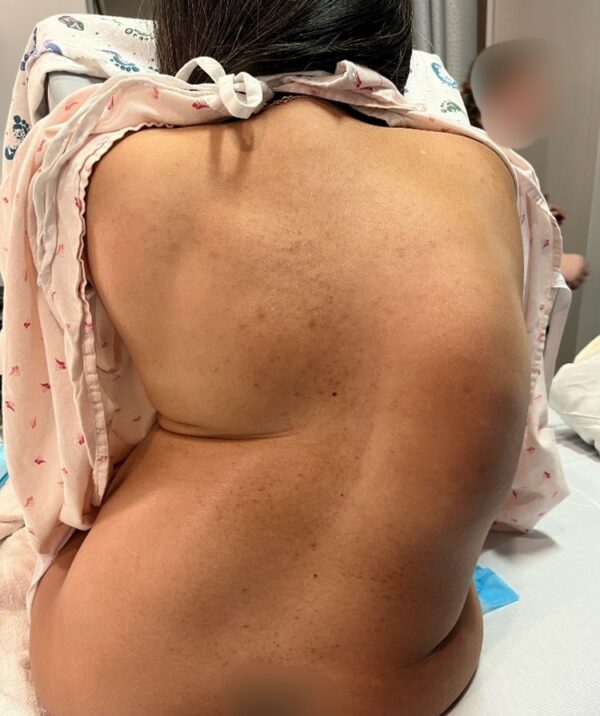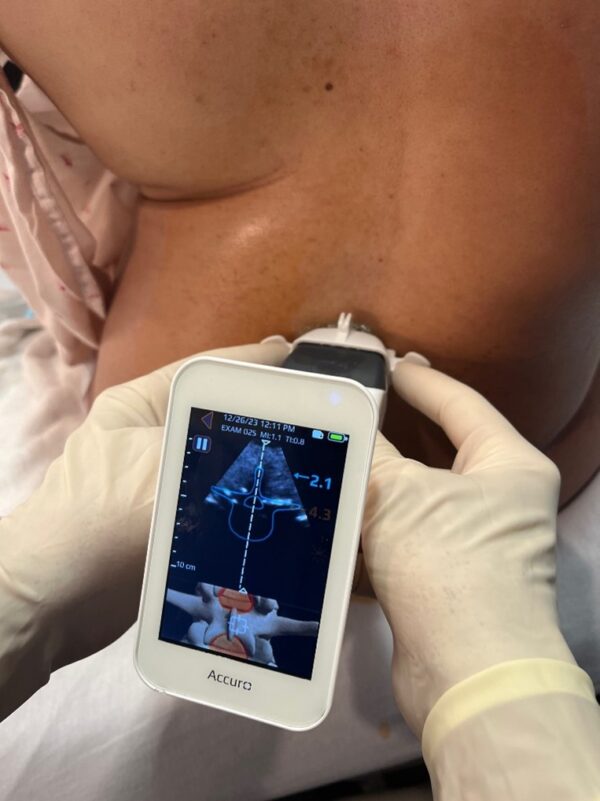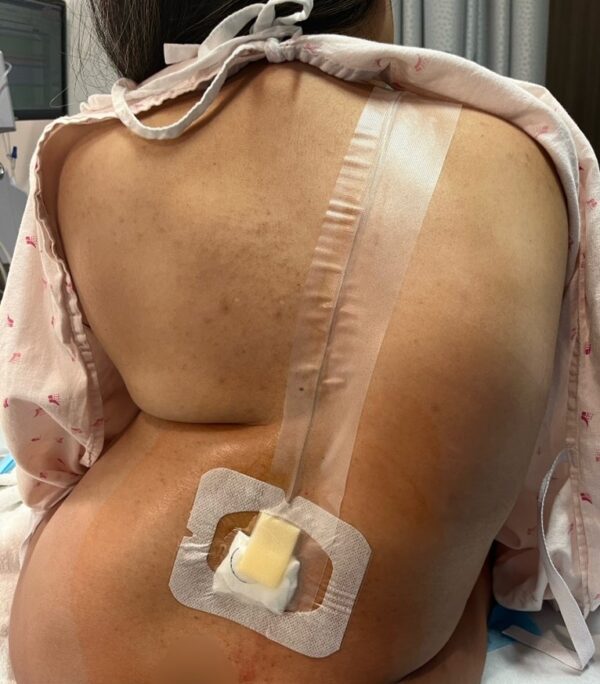Neuraxial anesthesia is a cornerstone in obstetrics for labor and delivery. Epidural placement requires exceptional precision, as any inaccuracies can lead to serious complications such as nerve damage or ineffective pain management. Dr. Stephen Garber, an experienced anesthesiologist, emphasizes the significance of confidence in this field: “In neuraxial anesthesia, precision and safety are paramount. Our ability to accurately identify and access the epidural space can make a significant difference in patient outcomes.”
The confidence of anesthesiologists in identifying the correct anatomical landmarks is vital, but this task is often challenging for patients with atypical body types and spinal structures — particularly scoliosis. This challenge was amplified in a recent case study involving Dr. Garber’s patient with severe thoracolumbar scoliosis.

Problem: Complex epidural placement in severe scoliosis
The patient in this case initially consulted with Dr. Garber — eight weeks prior to delivery — to assess the viability of epidural placement. She presented with severe thoracolumbar scoliosis. The traditional approach to epidural placement posed formidable obstacles. Dr. Garber explains, “Scoliosis isn’t just about curvature; it involves a twist in the spine.” This twisting significantly increased the procedural complexity and rendered standard palpation techniques for epidural needle placement inadequate.
Compounding this challenge was the absence of preexisting medical data. The patient had not undergone any surgical interventions, and radiological imaging was unavailable. Dr. Garber highlights the predicament: “We were essentially navigating in the dark, adding layers of complexity to an already intricate procedure.”
Traditionally, methods for navigating this unique anatomical challenge relied on intuition or intensive experience. “In traditional epidural placement, you’re largely guessing based on feel,” Dr. Garber explains, “which is far from foolproof.” The risk of inaccurate placement and multiple needle insertions would have been high for an epidural placement guided by blind palpation, potentially resulting in patient discomfort, ineffective pain management, or even nerve damage. In many cases, severe scoliosis is a contraindication for epidural placements, significantly limiting options for pain management during labor and delivery.
This case underscores the pressing need for real-time imaging and accurate guidance in complex epidural anesthesia because, as Dr. Garber emphasizes, “Every millimeter counts — a slight misjudgment can have significant consequences.”

Solution: AI-enhanced Accuro ultrasound guidance
To successfully, and confidently, place the epidural for this patient with severe scoliosis, Dr. Garber used the Accuro Neuraxial Anesthesia Guidance system.
Accuro’s innovative design combines portability with cutting-edge AI overlays, offering real-time visualization of anatomical structures. Its user-friendly interface allows for precise and immediate identification of the midline, as well as the depth and trajectory of needle placement.
The precision Accuro provides was crucial in optimizing care and ensuring the best possible experience for Dr. Garber’s patient. He notes: “AI in devices like Accuro isn’t just a fancy feature; it’s a critical component that enhances our ability to deliver care.”
In Dr. Garber’s case, Accuro played a pivotal role in preemptive spinal assessment for proactive procedural planning. It enhanced precision and accuracy in identifying the epidural space, mitigating the uncertainties associated with palpation-based approaches. Dr. Garber shares: “This level of precision and accuracy is simply not achievable with traditional palpation. By enabling us to confidently navigate [the patient’s] unique spinal structure, we could assure the patient of a safer procedure, significantly reducing her anxiety.”

Outcome: Confidence, epidural success, and patient satisfaction
Accuro played a critical role in raising Dr. Garber’s confidence in the safety and viability of epidural placement for the patient. “Accuro’s precision and clarity in imaging not only assuaged patient concerns,” he observes, “but it also significantly elevated my own confidence in executing the procedure.” This newfound confidence was instrumental in navigating the patient’s unique spinal structure, reducing procedural complexity, and mitigating potential risks.
Despite the inherent complexities of Dr. Garber’s case, the epidural procedure was accurately confirmed as viable and successfully administered for labor and delivery. Ultimately, the patient experienced a smooth delivery with effectively managed pain and no complications. “The Accuro device didn’t just aid in the successful administration of the epidural,” Dr. Garber reports. “It played a critical role in shaping the patient’s experience.”
Accuro’s integration into clinical practice has broader implications for medical education and training. Dr. Garber also discusses how teaching new anesthesiologists has transformed with Accuro: “We can now provide a level of understanding and precision that was previously unattainable.” In this way, Accuro is both enhancing procedural outcomes and enriching clinical education to support the future’s anesthesiologists — and their patients.
Takeaways
As healthcare professionals, we constantly seek ways to enhance patient care, improve procedural outcomes, and ensure the highest safety standards. Stephen Garber’s case study — a true success story for his patient — is a testament to the power of innovative medical technology in achieving these goals.
If you’re an anesthesiologist, a healthcare provider, or a leader within the medical community, it’s time to explore what Accuro can do for patients. As Dr. Garber puts it: “Accuro is about enhancing overall patient care. Its evolution is exciting, and I see it playing a bigger role in the future of anesthesia.” We couldn’t agree more.
